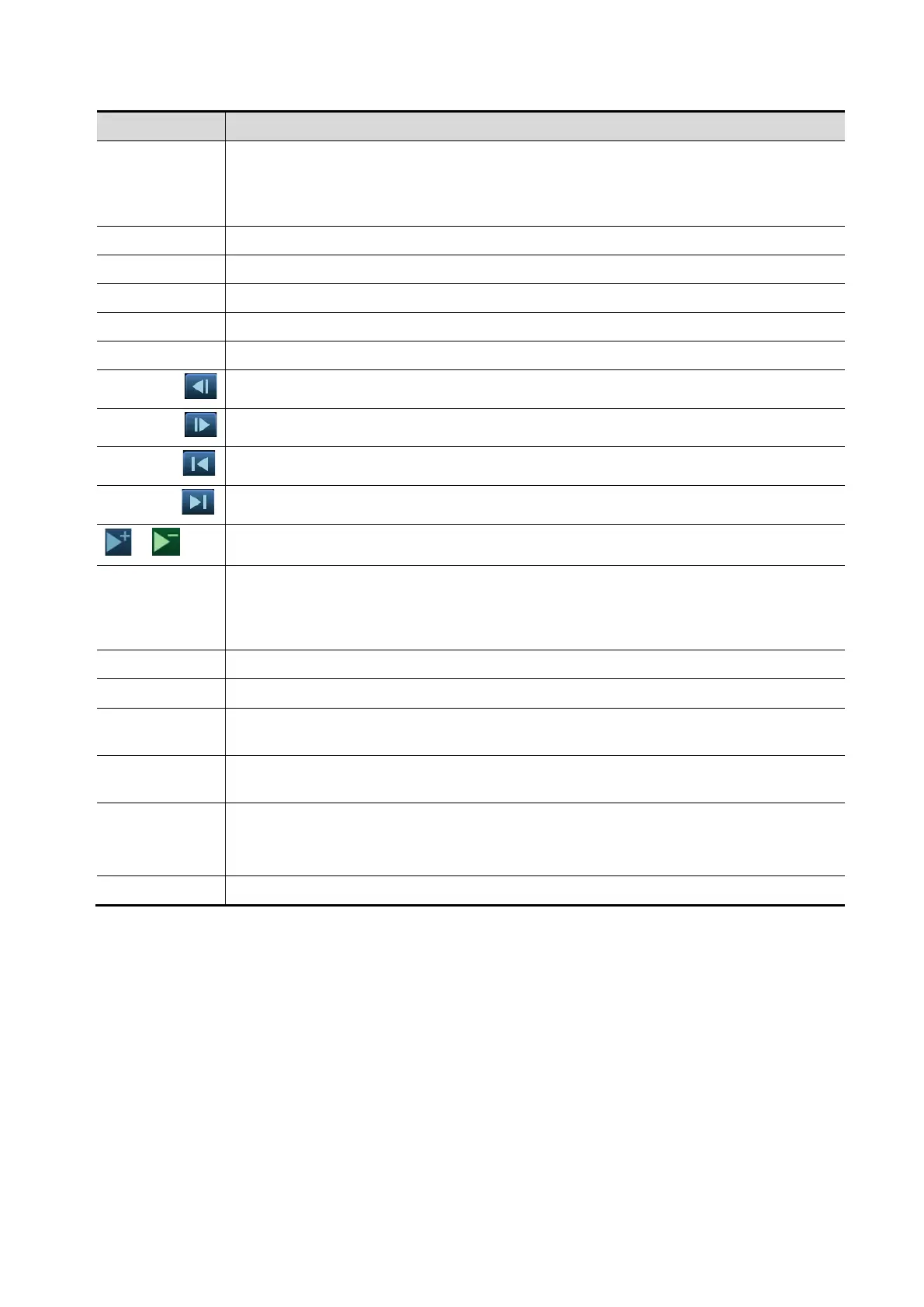Image Optimization 5-105
Selection Description
1. Clip
/2. Clip
/3. Clip
/4. Clip
For selecting views in the selected stage.
Next Next four Clips.
Previous Previous four Clips.
Last Go to “last” Clips.
Play Click to play/stop cine play.
Prev frame
See previous frame of the cine file.
Next frame
See next frame of the cine file.
First frame
See first frame of the cine file.
Last frame
See last frame of the cine file.
/
Decreases or increases playback speed.
Tex t Function that turns the screen graphic text “On” or “Off.” Information includes: name
of level, name of view, heart rate, time stamp acquisition, timers, frame slider, loop
ID, clip control. For the cine without distributed view, the name of level and name of
view are displayed in “--”.
Apply edit all Clip edit applied to all clips taken.
Clip Length Specify the clip segments: systole, diastole, full cycle or user-defined.
Bookmark
For continuous acquisition, when the bookmark is set to “On”, only the selected
loops for the current view can be displayed.
Delete
Unselected
Delete clips that are not selected. If selected, the system will delete all clips that are
not selected after the exam is ended.
Suspend exam Pauses the stress echo exam but does not end the stress echo exam.
When a stress echo exam is suspended, the user can perform image acquisition of
all other imaging modes, or perform operations such as measurement.
End SE exam End the stress echo exam.
5.15.4 Review/WMS Mode
Review/WMS mode is used by cardiologists to evaluate clips for cardiac wall motion abnormalities.
Different views from different stages are selected for comparison across a wide variety of combinations.
The most common workflow is to compare “same views” but at “different stages” of the exam (e.g.,
PSLA view, Rest stage compared to PSLA view, Post-exercise stage).
5.15.4.1 Enter review mode
1. Select [Review/WMS].
2. Select the label of the phase or view (for example, Rest or Long Axis) on the right part of the screen.
The system displays all loops that represent the selected phase or view.

